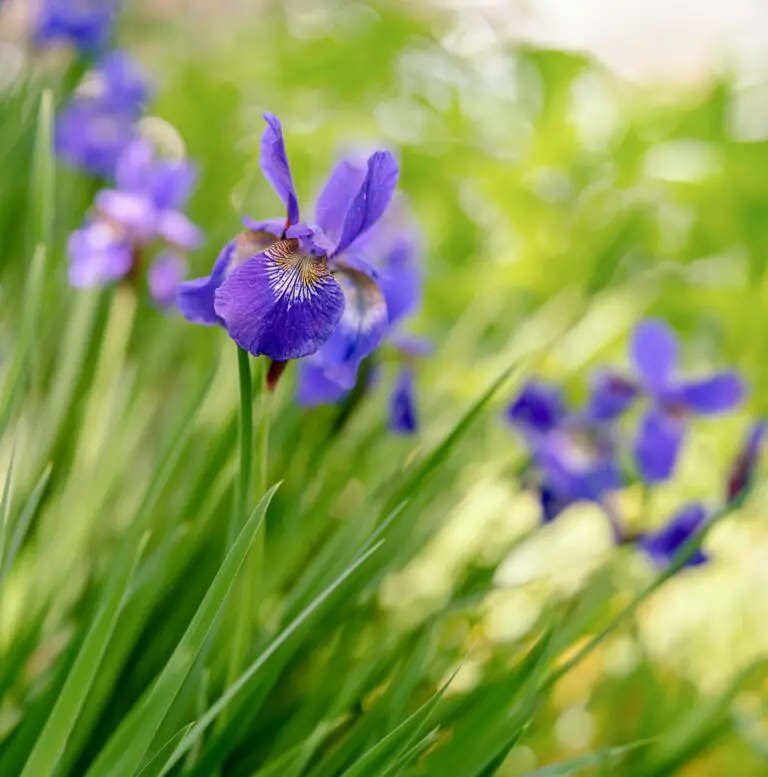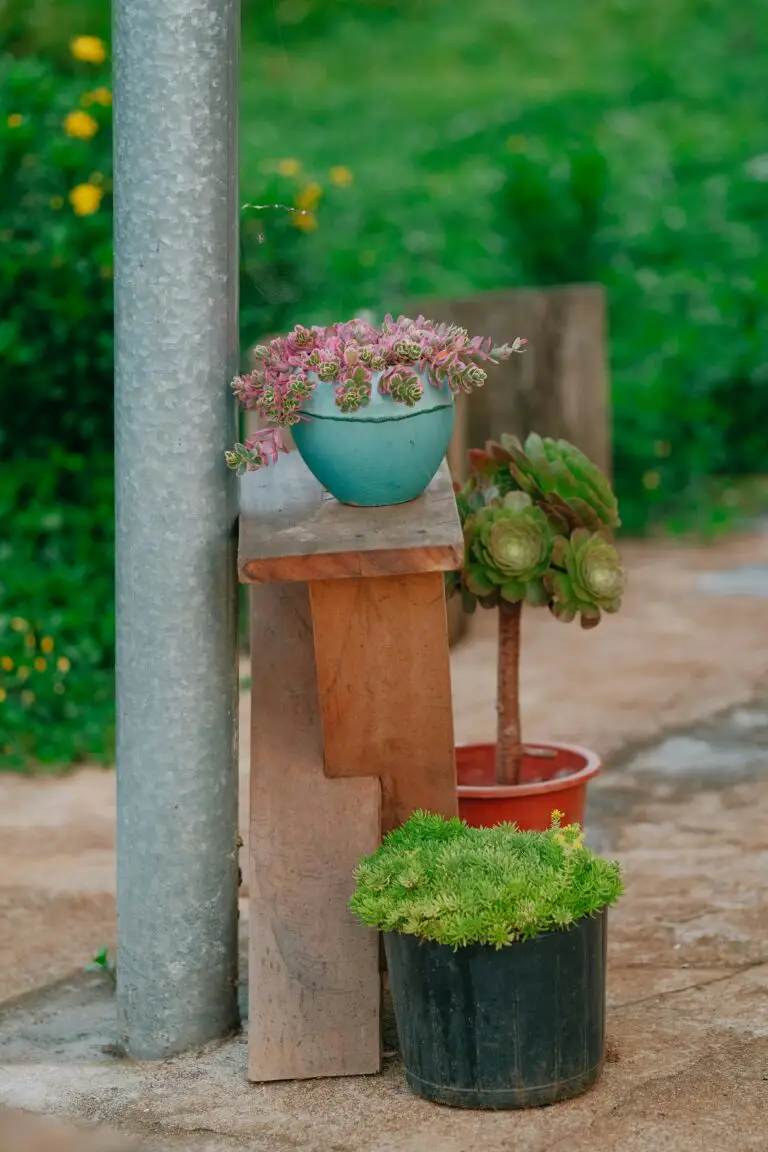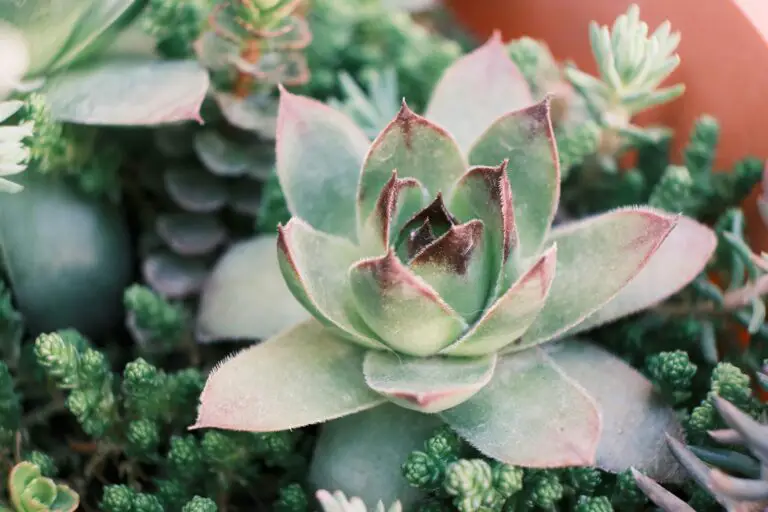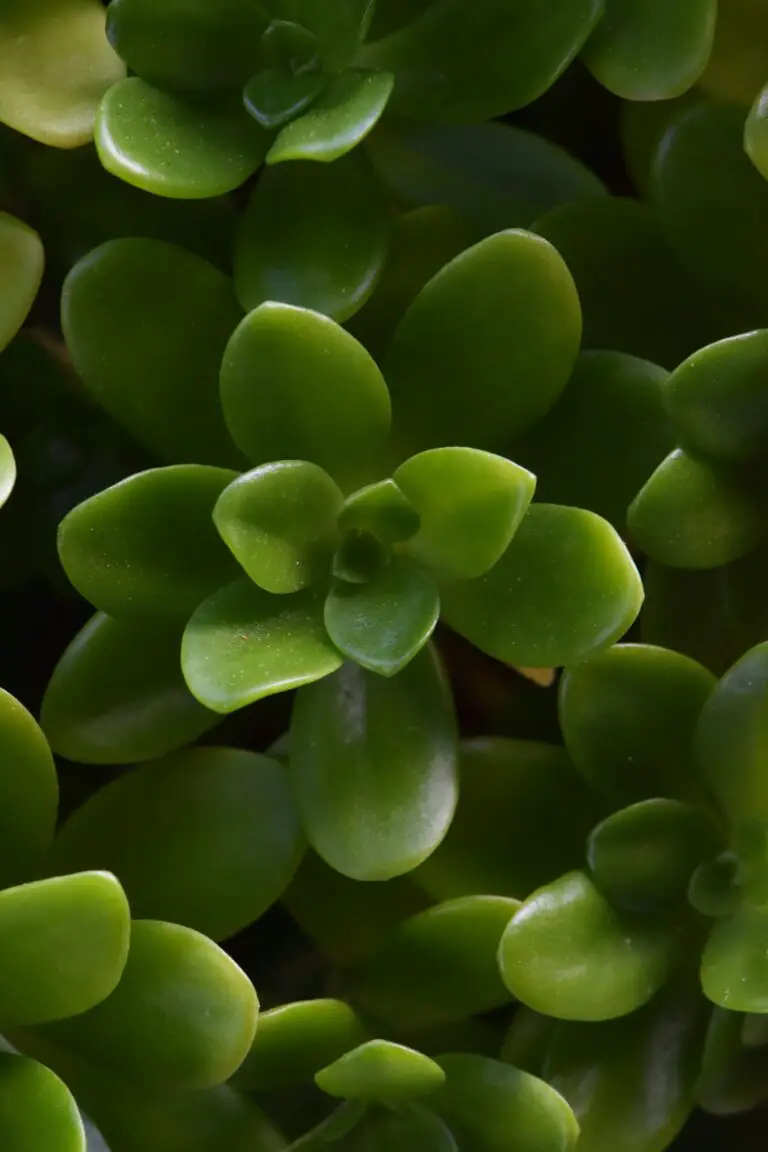Introduction to Sedum Pruning
Welcome to the enriching world of Sedums, a diverse genus of succulents that add a tapestry of color and texture to your garden. But what’s a masterpiece without a little refining? That’s where pruning swoops in, with shears in hand, to sculpt your sedums into their best selves. As gardeners, we often grapple with the question: when to cut back? Let’s slice into the heart of this gardening puzzle and spotlight the necessity of this task for thriving greenery.
Why snip, you ask? Well, picture this: a vivacious sedum plant, resplendent with vibrant blooms, when suddenly it becomes a flop show come late summer. To avoid such dramas, strategic pruning comes into play. It strengthens plant structure, wards off pests by promoting good air circulation, and can even coax flat-toppers to burst into fuller figures. Timing, it turns out, isn’t just a punchline – it’s paramount for the performance of your sedums.
While sedums are fairly forgiving, they have a sweet spot for when the shears should meet their stems. It’s not just a random game of eeny, meeny, miny, moe; it requires an eye for rhythm. With different sedum varieties sweeping across gardens, from the starry ‘Stardust’ to the autumnal ‘Matrona’, each has a pruning timeline that if followed diligently, can unleash their ultimate potential.
Dive deep into our guide on thriving stonecrop varieties to embrace their true charm and avoid the rookie mistake of untimely trims. With the right snip at the right time, your garden’s sedum story will be nothing short of spectacular – a testament to the merits of mindful maintenance.

Stay with us as we usher you through the seasons of sedum care, and soon, your garden will mirror the artful practice of perfect timing and precision. Think of pruning not as a chore, but as your secret handshake with nature, signaling your plants to wake up, branch out, and put on their show-stopping best.
Understanding Sedum Growth Cycles
Imagine a journey through the seasons with your faithful sedum companions! These hardy and versatile succulents present a delightful story of growth that speaks to the rhythm of the year. Understanding their lifecycle is essential for any gardener looking to maximize their sedum’s health and aesthetic appeal.
The Awakening: Spring Revival
Spring for sedum is like a morning stretch after a long slumber. It’s here where you’ll start to notice fresh shoots puncturing through the soil in a triumphant greeting to the warming sun. This period of active growth is when your sedum is thirsty for energy and begins to build up the strength that will carry it through the upcoming blooming months.
Summertime: Sedum Hits Its Stride
With the onset of summer, sedum plants truly hit their stride. Enjoy watching the fleshy leaves and stems thicken, storage of water enhancing their robustness to withstand the relentless summer heat. Flower buds begin to form, giving a sneak peek into the splendid colors they will unveil.

As gardeners, it’s in the summer that we must resist the urge to prune. Sedum, it seems, is conducting its own orchestra, and interrupting it with premature cuts could hinder the grand performance of blossoms yet to come.
Autumn: The Grand Finale of Blooms
Autumn is showtime! The sedum’s blooms burst forth in a spectacular display of color, offering a final, grand gesture before the colder days arrive. This is nature’s cue; once the show is over and the flowers have faded, it’s the perfect time to consider trimming back these resilient performers.
Winter Dormancy: A Rest Well Earned
As the chill of winter approaches, sedum plants tuck themselves in, entering a dormancy period. The once vibrant foliage recedes, and your sedum retreats to conserve energy in the roots. This is the season of rest for your sedum—and for you, dear gardener, an opportunity to plan for when to prune in anticipation of another year of growth.
Remember, each cut is a strategic step in sculpting your garden’s masterpiece. So pay close attention to your sedum’s growth cycles and prune wisely. Welcoming these natural rhythms into your gardening practice isn’t just about aesthetics; it’s about harmonizing with the Earth’s tempo and allowing your sedum to reach its full, magnificent potential every year.
When to Prune Your Sedum
Is your garden brimming with the lush leaves and vibrant blooms of sedum? Then you’re right on track to talk about pruning! When exactly should you snip snip? Ah, the eternal question. Well, let’s slice into the heart of the matter – different strokes for different sedum folks! Whether you’re tending to the low carpet varieties or the towering beauties, the time to wield your pruners changes.
For starters, spring is a good rule of thumb for most. As the last frost fades and green shoots pop up, give your sedum a light trim. This isn’t about giving your plants a new style but rather encouraging thicker growth and more blooms down the road. It’s sort of like a haircut for your plants—trimming the dead ends for healthier, fuller locks.
And then we have the ‘Chelsea Chop.’ Sounds fancy, doesn’t it? Late spring or early summer, right around the time the Chelsea Flower Show is wowing crowds, is perfect for cutting back those taller, autumn-flowering varieties by about one-third. This handy little trick staves off that midsummer flop and pushes the blooming window a touch later, ensuring your garden stages an encore performance when others might be bowing out.
But wait, there’s more! Autumn also plays a part in this pruning play. After sedum steals the spotlight with its showstopping blooms, the curtain fall comes with the first frost. That’s your cue to prune again! Cut those statuesque stems back down, leaving just a little bit of the structure to mark their place — a beacon for next year’s growth.
If you’re a visual learner and need to see these tips in action, check out this handy guide for timing your sedum pruning. And for a deeper dive on keeping your succulents in tip-top shape, our Seasonal Care for Healthy Growth page is chock-full of tips and tricks.
Remember, folks, revenge might be a dish best served cold, but pruning is an activity best done with a plan. For an eye-opening experience on maintaining succulent health, take a gander at this video:
So, my green-fingered friends, mark your calendars, grab your shears, and get ready to give your sedum the snip-snap it needs for year-round allure. Happy pruning!
How to Prune Sedum
You might be pondering about the perfect time to give your precious sedum plants a haircut. Well, fear not, because keeping your sedum in tip-top shape is as simple as following these steps. Let’s sharpen those pruners and get started on transforming your sedum into the envy of the plant kingdom!
Step 1: Gather Your Tools
Before we dive into the thick of it, let’s talk tools. Ensure you have a pair of sharp pruning shears because dull blades can lead to frayed cuts and unhappy plants. Throw in a sturdy pair of gloves to keep your hands free from scrapes, and you’re armed for the job.
Step 2: Timing is Everything
The time you choose to prune can make all the difference. The ideal period is in late winter or early spring, just before new growth starts. Why? Because it gives your sedum a fresh start and ensures energy is directed to the growth that matters.
Step 3: The Art of Making the Cut
Now let’s get to the heart of the matter – making those crucial cuts. Start by removing any dead, damaged, or diseased stems; these are not only unsightly but also a drain on your sedum’s resources. Make a clean cut just above a leaf node where new growth can spring forth.
Encountering a thick, rebellious stem? If your normal shears won’t do the trick, switch to a pair of loppers for that satisfying snip. Remember, you can remove up to one-third of the plant without fear – it’s like giving your sedum a rejuvenating spa treatment.
Step 4: Shape and Style
Think of yourself as an artist and your sedum as the canvas. As you prune, step back occasionally to examine the overall shape. Aim for a natural, rounded form, or whatever shape complements your garden’s vibe – your sedum, your rules!
Step 5: Post-Prune Care

With your sedum looking prim and proper, it’s time to ensure it stays that way. Give it a gentle watering to help the plant recover and soak up the much-needed hydration. And that’s how you keep your sedum healthy, happy, and ready to face the growing season with gusto!
Luckily, if you’re still hungry for more tips, there’s a treasure trove of knowledge just a click away. Learn all the nitty-gritty details about pruning sedum plants and watch your garden flourish.
Caring for Sedum After Pruning
Once your sedum plants have been tidily trimmed, it’s vital to pivot towards post-pruning care to ensure they rebound with vigor and vitality. Remember, the aftermath of a trim is a defining moment for the health and aesthetics of your sedum! Let’s dive into the essentials of nurturing your succulents back to their full glory.

Water Wisely
After bidding farewell to the excess foliage, your sedum’s thirst levels may fluctuate. It’s a common misconception that these drought-tolerant darlings don’t crave water. In reality, a moderate drink to moisten the root zone promises a world of benefits, especially following a trim. But beware, waterlogged soil is the nemesis of these hardy beauties, so ensure proper drainage to ward off the threat of root rot.
Nourish Naturally
Think of fertilizing as serving a gourmet meal to your sedum. A light sprinkle of a balanced, slow-release fertilizer can be the perfect pick-me-up, helping it to bounce back post-snip with lush, compact growth. It’s like a spa day for your plants: not too frequent, but utterly rejuvenating.
Guard Against the Gremlins
A haircut for your sedum might expose previously shielded areas, making them more susceptible to pests and diseases. Shield your succulents by playing detective, scanning the foliage and soil for uninvited guests. Encounter aphids, mealybugs, or other pesky pests? A gentle organic insecticide should shoo them away without drama.
Disease diligence is equally crucial. If your sedum is showing signs of distress, such as discoloration or wilting unrelated to water issues, consider a mild fungicide to nip potential problems in the bud. Your sedum needs vigilance more than ever during this recovery phase to emerge in top form.
In essence, the secret sauce to sedum success after a trim is all about balance—water carefully, feed judiciously, and protect zealously. With these tips, your sedum will not only recover but thrive, proving that a little TLC goes a long way in the plant world. So don your gardening gloves and bestow your botanicals with the care they deserve!
Avoiding Common Pruning Mistakes
Let’s talk trims and nips, fellow sedum enthusiasts! When it comes to sedum—those hardy, succulent beauties—the snip of a shear can make all the difference. But too often, even the greenest thumbs can make blunders that lead to less-than-lush outcomes. Fret not! We’re here to tease out those pesky pruning pitfalls and steer you towards sheer sedum success.
First up, timing is everything. Think of pruning your sedum like scheduling a haircut before a big event; do it too early, and you’ll miss that pinnacle of perfection. The sweet spot? Wait for that flush of post-winter growth or hold off until the stems are just tall enough to tempt a snip. Too early, and you risk stunting their spirited spring show; too late, and you’ll trim away this season’s spectacle.
Next, the ‘how’ matters as much as the ‘when.’ Chopping with abandon might seem freeing, but your sedum won’t thank you for the haphazard hack job. It demands finesse and forethought. Each cut should be purposeful, aimed at shaping, rather than shocking, your verdant friend. Below, you’ll find a visual guide that breaks down common sedum snipping errors.
But before you watch, a word to the wise: over-pruning can turn your plump-leafed pal into a sparse sprawl. It’s tempting to go all topiary artist, envisioning grand designs, but overzealous cutting can weaken its natural form and resilience. A restrained approach often yields the most bountiful blooms and robust foliage.
Think of your sedum like a sculptor eyes a block of marble; the masterpiece is already there, you’re just coaxing it out, one thoughtful snip at a time. Let’s bring those abstract pruning principles into focus and plant the seeds of knowledge that will help your sedum shine. That’s right, we’ve curated a video that gets down to the gritty details of sedum snafus!
A glimpse at this guide will arm you with the dos and don’ts, skirting the common clippers’ confusion that could compromise your plant’s poise. Remember, the goal is to encourage your sedum to spread its leafy wings, not clip them. So wield your shears wisely, and watch your sedum repay you with growth that’s as robust as it is radiant.
And while we’re dodging the mishaps of mispruning, let’s not ignore the tools of the trade. Blunt blades can bruise and batter your sedum’s stems, leaving them vulnerable to pests and pathogens. Sharp, clean cuts are key to keeping your plant pristine and vigorous. Regularly honed shears will cut cleanly through the fleshy foliage without tugging or tearing, sealing the deal on a successful sedum snip session.
Brush up on these pointers, and instead of a pruning puzzle, you’ll cultivate a symphony of sedum that sings with health and happiness. By cutting back on the cutting back mistakes, your sedum sanctuary will stay splendid, from first frost to fall’s finale. Now, get out there and prune with purpose!
FAQs About Sedum Pruning
Are you scratching your head wondering when to cut back your sedums? You’re not alone! Gardening can sometimes feel like you’re tiptoeing through a minefield of “do this, don’t do that” advice. Let’s make sense of it all with some straightforward answers to your most pressing sedum pruning queries.
How Much Should I Cut Back My Sedum?
Think of pruning your sedum like giving it a hair trim—enough to keep it looking neat, but not so much that you’re left with a stub. A good rule of thumb is to cut back one-third to one-half of the plant’s total height. Remember, the goal is to encourage bushy growth and maintain the plant’s natural shape.

What Should I Do If My Sedum Is Leggy?
Leggy sedums are crying out for attention—and a good prune. If you’ve got a sedum that’s stretching towards the sky like it’s trying to signal aliens, it’s time to intervene. By cutting back the long stems to a healthy set of leaves, you’re giving your plant a fresh start. Plus, you prevent it from toppling over like a tipsy guest at a garden party.
Do All Sedum Varieties Need Pruning?
While Dennis the Stonecrop may not need the same haircut as Sally the Showy Sedum, they do share one thing in common—they can both benefit from pruning. Not all sedums need an annual cut, but keeping an eye on them will tell you if they’re begging for a trim or if they’re happy as they are, soaking up the sun.
Understanding your plant’s body language is key. Is it slouching, sprawling, or just seems a bit off? Then grab your gardening shears—it’s time for a sedum spa day. Pruning varies from one variety to another, but a touch-up can help manage size, invigorate growth, and encourage flowers that will wow the neighbors.
There you have it: trim judiciously, watch for legginess, and get to know your varieties. With these tips, you’ll be a sedum-pruning whisperer in no time, leaving your garden looking like it’s straight out of a magazine. Remember, every snip is a conversation with your plant—make it a meaningful one!
Timing Your Trims: The Key to Thriving Sedum
As the sun dips lower in the sky and the chill of autumn whispers through the air, it’s time for sedum enthusiasts to take note. There’s an art to perfecting the seasonal snip – it’s not just about when to cut back sedum, but how your mindful trims can elevate your garden. Imagine the difference between a sedum collection that’s merely surviving and one that’s robust, flowering with vigor. That’s the magic of proper timing.
Real-Life Transformations: Sedum Success Stories
Consider Jane from Jacksonville, who discovered that late summer prunes gave her ‘Autumn Joy’ sedum the boost it needed to burst into radiant fall blooms. Or Elliot in Edinburgh, whose careful spring cutbacks transformed his overgrown ‘Dragon’s Blood’ into a sculptural delight. These are the tales of growth and regeneration that underscore the importance of the seasonal shear.
Rest assured, you too can harness these horticultural secrets. With the wisdom gleaned from our article, your own collection can become the envy of the neighborhood. Picture it now: friends marveling at your lush sedum tapestry, all because you learned the when and the how of cutting back.
Don’t just take our word for it, dive into the wealth of knowledge shared in the video above. It’s brimming with visual demonstrations that are bound to inspire your next pruning session.
Embrace the Shears, Embrace the Growth
In conclusion, understanding the nuances of sedum maintenance is a game-changer. It’s not about arbitrary trimming; it’s about strategic cuts that support vitality and growth. So, as you put these insights into practice, remember that each clip of the shears is a step toward a more spectacular garden. Happy pruning!



